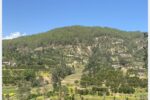Nepal, the country with young mountains, tectonically active zones, and fragile geology, is prone to landslides that kill people and destroy properties worth millions of rupees.
Landslides affect urbanizing dense settlements and impoverished and marginalized populations living in those settlements.
The poor and scheduled caste people often reside in landslide-prone areas as they cannot afford safer places which are usually costlier.
According to Nepal Disaster Risk Reduction Portal, Nepal witnessed 2458 landslides between 2011-2021. The total estimated loss in this period was NPR 1,752,650,237. In 10 years, 1384 people have lost their lives, and 8169 families have been affected.
The landslides have seriously affected people’s livelihood, settlement patterns, and agricultural production. Most landslides occur during the monsoon season (June-September).
In 2021, about 73 percent of landslides occurred in the monsoon. Various natural and anthropogenic factors are responsible for triggering landslides.
Settlements increase faster in the area where a road is nearby. If landslides occur in such dense settlements, casualties and economic loss would be high.
In Nepal, the natural factors contributing to landslides are the rugged topography and weak geology of mountains that experience frequent soil erosion, high-intensity monsoon rain, and earthquakes.
Likewise, cloudbursts due to climate change (most likely) have further intensified the landslide incidents. Anthropogenic factors responsible for increasing landslides include changes in land-use patterns, unplanned urbanization, and faculty development activities such as non-engineered road constructions, mining, and blasting.
With the establishment of multi-party democracy in the country in the 1990s, road construction became the priority of the government and it increased more rapidly when the Maoist conflict ended in 2006.
Currently, haphazard rural road constructions in Chure hills and mountains have become an issue of concern since it is triggering landslides in the fragile landscapes of Nepal.
The 2021 report on landslides and roads produced by Oxford Policy Management has shown increased investment in the road by the Government of Nepal since the budget allocated in 2018/19 was 7.5 times more than 2007/08.
It shows the increasing prioritization of roads from a development point of view. It has been intensified after the local governments became powerful after federalism.
At the same time, the numbers of landslides have sharply increased after the 2015 Gorkha earthquake affecting these newly constructed roads.
Local road constructions in the Chure are mostly non-engineered and have highly altered the physical landscape. Local users’ committees construct rural roads, and such practices are also questionable as they lack adequate knowledge and skill.
Heavy machines are used in the fragile Chure, increasing the susceptibility to landslides and threatening communities.
Local politicians often influence the bulldozer operators/owners to construct roads as per their interest without a basic understanding of grading, drainage or soil nature. The drivers (dozer operators) lack knowledge of soil types. Yet, understanding soil is essential in the fragile Chure due to its crumbly nature.
The landslides occur in road alignment areas as most rural roads lack drainage and a culvert system.
Despite these issues, track opening is the priority of the local government, whether it will be sustainable or not. That is why many rural roads remain unused and abandoned since they are constructed without adequate planning.
In the cut and throw approach, the dozer operators cut the hill and throw the soil underneath and no further supportive measures are considered.
This method destroys the ecosystem therein. Consequently, non-engineered local roads get washed away during the monsoon and become impassable.
It becomes costly to clear and repair the roads in the post-monsoon. This process repeats every year until the loose soils no longer create nuisances.
Even after understanding the risks in the vulnerable terrains, roads are extensively prioritized by Nepal’s local to provincial governments.
The communities themselves demand road constructions with the local leaders, and roads are perceived as infrastructure to improve their livelihood opportunities.
The roads are expected to improve mobility and reduce drudgery. Furthermore, roads will also open avenues for economic opportunities and increase land prices.
Rather than constructing several roads in the same location, limited but sustainable roads could be constructed as per the areas prioritized by the municipality where communities can largely benefit.
Settlements increase faster in the area where a road is nearby. If landslides occur in such dense settlements, casualties and economic loss would be high.
With limited studies done and evidence generated, construction companies lack an understanding of the relationship between road and landslides.
Local stakeholders prefer machines and heavy equipment for road construction as they seek speedy work at a low cost.
Some solutions and ways forward for landslide management may be developing a suitable land use policy, carrying out credible IEE/EIA, and its sufficient implementation, and properly following the DPR.
The local governments need to prepare a road Master Plan, and the communities need to carry out resilience planning and cost-benefit analysis of the road infrastructure before construction.
A common understanding and effective coordination between three tires of governments are necessary to meet local needs and aspirations.
Rather than constructing several roads in the same location, limited but sustainable roads could be constructed as per the areas prioritized by the municipality where communities can largely benefit.
In a nutshell, roads provide multiple benefits to the communities, but their non-engineered construction practices could put them at risk. The engineered and sustainable road constructions are the need of time.









Comment